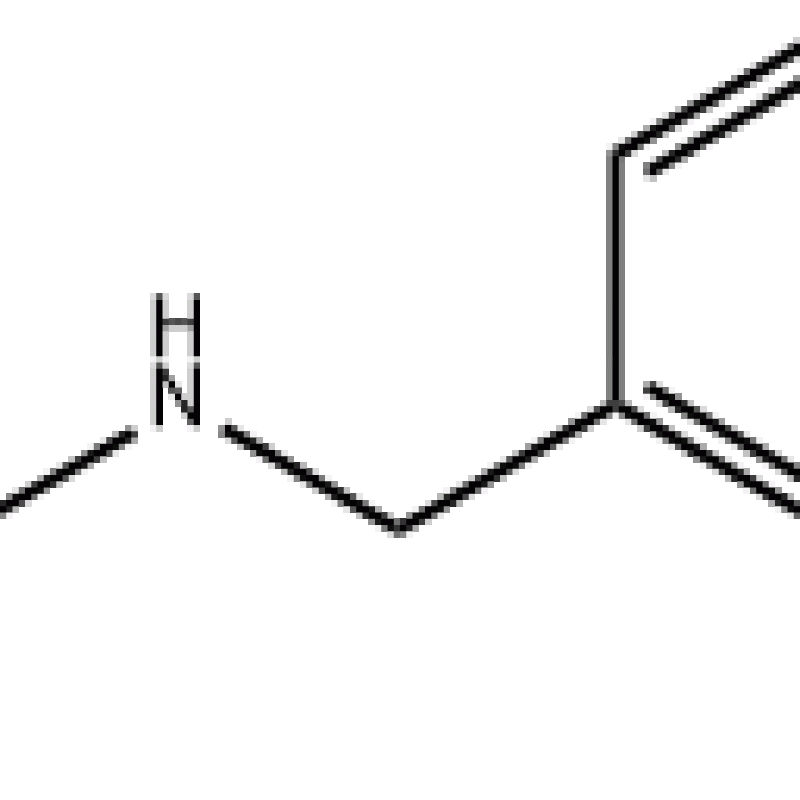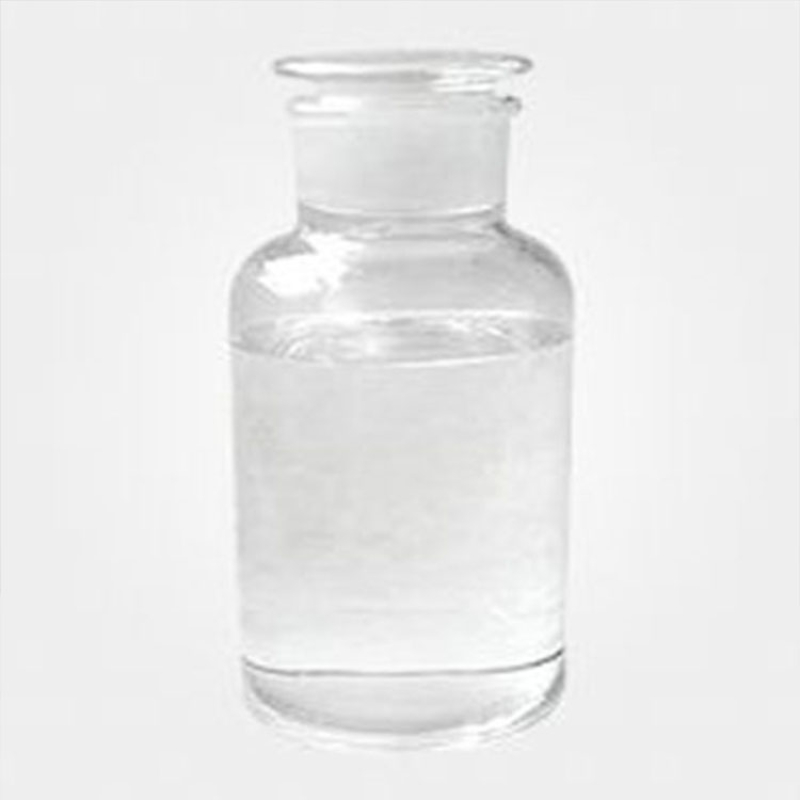Products Description of PseudotropinePseudotropine (3β-tropanol, ψ-tropine, 3-pseudotropanol, or PTO) is a derivative of tropane and an isomer of tropine.
Contact Now
Products Description of Diacetoneacrylamide CAS#2873-97-4Diacetone acrylamide has two reactive groups: N-substituted amide and ketone. It is very easy to copolymerize with other ethylene and monomers, thereby introducing ketocarbonyl groups into polymers. By utilizing the chemical properties of ketocarbonyl groups, polymers can undergo crosslinking and grafting reactions, and are used to prepare various adhesives, thickeners, paper reinforcing agents, crosslinking agents, etc.
Contact Now
Products Description of 2,2'-BITHIOPHENE CAS#492-97-72,2'-BITHIOPHENE is an organic intermediate.2,2'-BITHIOPHENE CAS#492-97-7 Chemical PropertiesMelting point 32-33 °C (lit.)Boiling point 260 °C (lit.)density 1.2455 (rough estimate)refractive index 1.6210 (estimate)Fp >230 °Fstorage temp. Keep in dark place,Inert atmosphere,Room temperatureform powder to lump to clear liquidcolor White or Colorless to Light yellow to GreenWater Solubility Insoluble in water.Sensitive Light SensitiveBRN 3039InChIKeyOHZAHWOAMVVGEL-U
Contact Now
Products Description of POTASSIUM TITANATE CAS#12030-97-6Potassium titanate is a white solid with a relative density of 3.1 and a melting point of 1515°C.
Contact Now
Products Description of Ethylene dimethacrylate CAS#97-90-5Ethylene glycol dimethacrylate is a diester, meaning there are two alcohol/acid combinations in one organic compound or monomer. Industries often combine this substance with other chemicals to make plastics or rubber.
Contact Now
POLY(DIMETHYLAMINE-CO-EPICHLOROHYDRIN) Chemical Propertiesdensity 1.1 g/mL at 25 °Crefractive index n20/D 1.427CAS DataBase Reference25988-97-0EPA Substance Registry SystemMethanamine, N-methyl-, polymer with (chloromethyl)oxirane (25988-97-0)Safety InformationHazard Codes XiRisk Statements 38-41Safety Statements 23-26-36/37/39WGK Germany 3Factory and Equipment ShowFast delivery timeInventory 2-3 working days New production 7-10 working days
Contact Now
Products Description of Chlorobutanol CAS#57-15-8Colorless crystals. There are two types of crystals: containing half molecular crystal water and anhydrous. The melting point of the containing half molecular crystal water type is 78℃, slightly soluble in water (1:250), easily soluble in ethanol (1:1), glycerol (1:10), ether, chloroform and volatile oil. The melting point of the anhydrous type is 97℃, the boiling point is 167℃, and the 135℃ (32.7kPa).
Contact Now
Products Description of diisooctyl 2,2'-[(dioctylstannylene)bis(thio)]diacetateCAS#26401-97-8Mainly used in PVC products that come into contact with food and medicine, such as plates, sheets, films, etc., and can be used in processes such as calendering, blow molding, extrusion, injection, etc.diisooctyl 2,2'-[(dioctylstannylene)bis(thio)]diacetate Chemical Propertiesdensity 1.08[at 20℃]vapor pressure 0Pa at 25℃storage temp. Refrigerator, under inert atmospheresolubility Chloroform (Slightly), Ethyl Acetate (Slightly)form Oilcolor ColourlessWater Solu
Contact Now
Products Description of Chromium(III) fluoride CAS#7788-97-8Chromium trifluoride, also known as chromium trifluoride, is an inorganic compound with the chemical formula CrF3. It is mainly used as a mothproofing agent for wool fabrics, a halogenation catalyst, a marble hardener and a colorant.On October 27, 2017, the World Health Organization's International Agency for Research on Cancer published a preliminary list of carcinogens for reference.
Contact Now
Products Description of Ethyl 2-ethylacetoacetate CAS#607-97-6Used as an intermediate of the drug rebapidEthyl 2-ethylacetoacetate Chemical PropertiesMelting point 170 °C (decomp)Boiling point 87-189 °C/743 mmHg (lit.)density 0.981 g/mL at 25 °C (lit.)refractive index n20/D 1.421(lit.)Fp >230 °Fstorage temp. Keep in dark place,Sealed in dry,Room Temperaturesolubility Chloroform (Slightly), Methanol (Slightly)pka12.02±0.46(Predicted)form Liquidcolor Colorless to pale yellowOdorat 100.00 %.
Contact Now
Products Description of N-Isopropylbenzylamine CAS#102-97-6N-Benzylisopropylamine can be used as an intermediate in the synthesis of compounds and as a precursor in the production of certain drugs. Due to its similarity in appearance and physical properties to methamphetamine, it has been included in the DEA's consideration in recent years. N-Benzylisopropylamine forms an amine adduct with magnesium in toluene at room temperature. Using N-Benzylisopropylamine as a ligand, bis(cyclopentadienyl)magnesium was prepared and characterized.
Contact Now
Products Description of 5-Nitrosalicylic acid CAS#96-97-95-Nitrosalicylic acid is a chemical substance with the chemical formula C7H5NO5 and a molecular weight of 183.12.5-Nitrosalicylic acid Chemical PropertiesMelting point 228-230 °C(lit.)Boiling point 316.77°C (rough estimate)density 1,65 g/cm3vapor pressure 0Pa at 25℃refractive index 1.6280 (estimate)storage temp. no restrictions.solubility water: soluble1g in 1475ml(lit.)form LiquidpkapK1:2.12 (25°C)color Clear yellow-beige to orange-brownWater Solubility Soluble in water 1g/1475
Contact Now
Products Description of N,N-DiMethyl-p-toluidine CAS#99-97-8N,N-dimethyl-p-toluidine is an organic compound with the chemical formula C9H13N.
Contact Now
Products Description of 1,3-Dioxan-2-one CAS#2453-03-4Used to synthesize polytrimethylene carbonate (PTMC)1,3-Dioxan-2-one Chemical PropertiesMelting point 45.0 to 49.0 °CBoiling point 135°C/4mmHg(lit.)density 1.200±0.06 g/cm3(Predicted)storage temp. under inert gas (nitrogen or Argon) at 2-8°Csolubility soluble in Methanolform powder to crystalcolor White to Almost whiteSafety InformationRisk Statements 22-36Safety Statements 24/25HS Code 29147000Factory and Equipment ShowFast delivery timeInventory 2-3 working days New production 7-10 wo
Contact Now
Products Description of 2-bromo-3-methylpropiophenone CAS#1451-83-8White powder2-bromo-3-methylpropiophenone Chemical PropertiesBoiling point 134-135 °C(Press: 8 Torr)density 1.357±0.06 g/cm3(Predicted)InChIInChI=1S/C10H11BrO/c1-7-4-3-5-9(6-7)10(12)8(2)11/h3-6,8H,1-2H3InChIKeyQGGNDYQVUDZPJB-UHFFFAOYSA-NSMILESC(C1=CC=CC(C)=C1)(=O)C(Br)C Factory and Equipment ShowFast delivery timeInventory 2-3 working days New production 7-10 working days
Contact Now
Products Description of Tetramethylammonium hydroxide CAS#75-59-2Tetramethylammonium hydroxide (TMAH), also known as tetramethylammonium hydroxide, is a colorless to light yellow liquid. It is the strongest organic base, very easy to absorb moisture, has a certain ammonia smell, can quickly absorb carbon dioxide in the air, has a low vapor pressure at room temperature, and is completely decomposed and gasified at 135~145°C. High-purity products are treated at 140°C without trace residue. The tetramethylammonium hydroxide solution is colorless, transparent, and has a slight ammonia smell.
Contact Now
Products Description of 7-Bromoisoquinoline CAS#58794-09-5Quinoline and isoquinoline are important components of antibacterial drugs.
Contact Now
Products Description of Benzyltributylammonium chloride CAS#23616-79-7Benzyltri-n-butylammonium chloride CAS number: 23616-79-7. Molecular weight: 311.93. LogP: 2.40770. Appearance and properties: white to light yellow crystals.
Contact Now
Products Description of Meloxicam CAS#71125-38-7Meloxicam is a non-steroidal antipyretic, analgesic and anti-inflammatory drug. It is not a hormone drug. It has strong anti-inflammatory, analgesic and antipyretic effects. It can selectively inhibit the activity of cyclooxygenase-2 (COX-2), thereby blocking the synthesis of prostaglandins. Its inhibitory effect on the biosynthesis of prostaglandins in inflammatory sites is stronger than that on the biosynthesis of prostaglandins in the gastric mucosa or kidneys. It is safer than other NSAIDs.
Contact Now
Products Description of Icaridin CAS#119515-38-7Icaridin, also known as Picaridin, was invented by the German company Saltigo. It is a broad-spectrum repellent with good mosquito repellent effect and long protection time. It is considered to be safer and less toxic than DEET, non-irritating to the skin, and has a higher overall level. It is also rated as the most effective mosquito repellent besides DEET by the Centers for Disease Control and Prevention of the United States. It is currently recognized as the best mosquito repellent chemical in Europe and the United States.
Contact Now
Products Description of KCL CAS#7447-40-7Potassium chloride is an important fertilizer for plant growth. It has a fast fertilizer effect and can be absorbed by the soil. It is not easy to lose. Applying an appropriate amount of potassium fertilizer can make the stems of crops grow firm, prevent lodging, promote flowering and fruiting, and enhance the ability to resist drought, cold, diseases and pests. Therefore, it is of great significance to agricultural high yield.
Contact Now
Products Description of Bis(2-ethylhexyl) phosphate CAS#298-07-7 Di(2-ethylhexyl) phosphate is a chemical substance. It is a viscous oily liquid with strong acidity.
Contact Now
Products Description of Sodium xylenesulfonate CAS#1300-72-7Sodium xylene sulfonate is a white or light yellow liquid, a surfactant, soluble in water, with a pH of 7.0 for 1% solution and a viscosity of mPa·s10[7]; 2.7 mm2/s at 20°C. It is mainly used as a coupling agent, solubilizer, turbidity point depressant, detergent aid, dispersant, emulsifier, hydrotrope, and viscosity regulator.
Contact Now
Products Description of Copper(II) sulfate CAS#7758-98-7 Copper sulfate is an inorganic compound. The inorganic industry uses it to make other copper salts such as cuprous chloride, cupric chloride, copper pyrophosphate, cuprous oxide, copper acetate, copper carbonate, etc. The common form of copper sulfate is crystals. Anhydrous copper sulfate is a white crystalline powder, which may also be light gray-green due to impurities. It is a soluble copper salt. The relative density is 3.603, and the solubility in water at 25°C is 23.05g.
Contact Now









![diisooctyl 2,2'-[(dioctylstannylene)bis(thio)]diacetateCAS#26401-97-8](https://d3rnfhc14zcmdf.cloudfront.net/cdn/ff/MEIXbra4wyUKJKW67w9UkqzwQzIZQBAtmtXt1eQRqFc/1718820022/public/styles/chanpinzhutu/public/2024-06/%E6%97%A0%E8%89%B2%E6%B6%B2%E4%BD%93%20%283%29%20-%20%E5%89%AF%E6%9C%AC_41.jpg?itok=btFpy9ph)
























